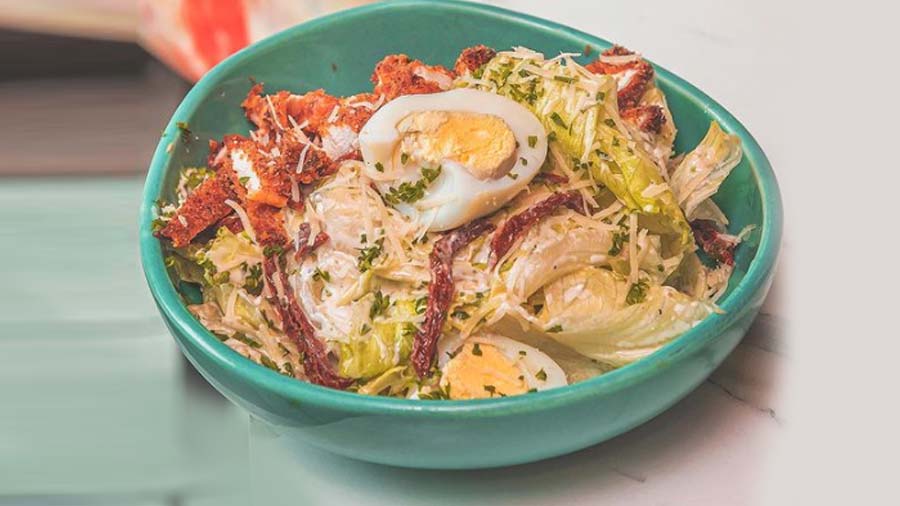The creamy lusciousness of a good Caesar Salad is indisputable but did it really serve as a source of nourishment for Julius Caesar? As it happens, Caesar Cardini, an Italian-American restaurateur, invented the Caesar Salad in Tijuana, Mexico in the 1920s. The recipe evolved as it moved to North America and then on to the world.
The evolutionary journey of some dishes is peppered with a robust history of naming foods after people, towns, countries and even heavenly bodies. Moon cheese, a crunchy cheese made by dehydrating fresh cheese over a long period of time, is one example.
There have been other quirky christening of dishes.
The dome-shaped dessert, Baked Alaska, a delectable combination of cake and cream, was invented at New York’s Delmonico restaurant in 1867, to commemorate the purchase of — you guessed it — Alaska. California roll was not born in California: it was created by the immigrant chef, Hidekazu Tojo, in Vancouver, Canada, in the early 1970s. Tojo realised that Canadians were averse to raw fish. So he created an inverted ‘sushi’ by rolling it with rice on the outside, protecting the inner sanctum of boiled crab and avocado, with a touch of mayonnaise, turning California roll into a winner.
Worcestershire sauce gets its name from its birthplace, Worcester, England, but there’s a surprising Indian twist. In the early 1800s, the English nobleman, Lord Sandys, hired the chemists, John Lea and William Perrins, to duplicate a sauce he had tasted during a trip to Bengal. The initial batch failed, and the two men left several jars in a cellar. A few years later, they stumbled upon these forgotten jars and realised, much to their delight, that the aging process had yielded something magnificent — thus was born the global kitchen cupboard staple, Lea & Perrins’ Worcestershire sauce.
Chicken Kiev has had an intriguing journey too, beginning with the Ukrainian capital, Kiev. The Russians sent their chefs to Paris to learn from the best and they returned with a recipe for a dish called the Mikhailovsky cutlet, made now with chicken that was a more exclusive meat at the time. In the years after the Second World War, this meal appeared on the tables of New York restaurants to lure Russian and Ukrainian immigrants and soon achieved legendary status.
Chicken Manchurian originated in Bombay in the loving hands of the son of CalcuttaChinese immigrants, Nelson Wang. He tossed chicken pakodas in a red sauce with onions, chillies and garlic and added some vinegar and soy sauce in for good measure, creating the love child of Indo-Chinese cuisine.
Scotch eggs (or deviled eggs in India) — a boiled egg wrapped in sausage meat and then deep fried — were supposedly introduced by Fortnum & Mason, a prolific food emporium in London in 1738. However, historians argue that its origins can be traced back to Persia, being suspiciously similar to the Nargisi kofta. Sorry Scotland, it wasn’t personal.
Similarly, Crème Anglais is neither French nor English — these egg custards can be traced back to the dietary habits of the Romans; English muffins are American, a variation of English crumpets; the Hawaiian pizza was invented in Ontario, Canada; sweetbreads are neither sweet nor breads, rather the pancreas of a young animal; the Welsh Rabbit is just melted cheese on crisp bread, while Cold Duck is a heady mix of burgundy and champagne.
What’s in a food name as long as it is delicious?










